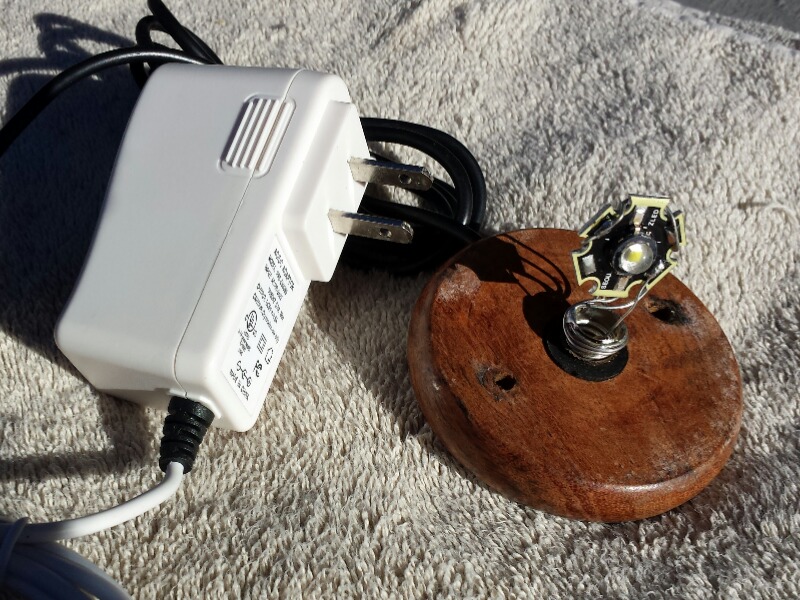I was asked to fix a Himalayan rock salt crystal light to make it brighter. These lights are larger (and heavier) than a 1 liter bottle. The salt is kind of a rusty red due to iron dissolved in the salt. There are many examples of these if you search for Himalayan salt light. The salt has a hole about 1 inch diameter and 2 inches deep drilled into its base for the lamp.
The lights apparently come in at least two models. One model comes with a 7 watt incandescent night light bulb, and the model I’m working on has a 5 mm LED with a 68 ohm resistor inside of a miniature screw-in lamp base. This has a USB cable and connector to plug into a PC or mobile phone charger.
The first thing I did was cut off the USB connector and splice a 5V, 1/2 Amp AC adapter that I bought from goldmine-elec.com for a dollar. I covered the splices with heat shrink tubing to make it look neat. I left the full lengths of cable on, so it does look a bit odd having 5 feet of white cable and 5 feet of black cable. But it’s a lot longer!
The LED and resistor leads were broken so I removed the 68 ohm resistor and replaced it with a 1 watt white star LED and a 10 ohm 1/2 watt resistor in the base. The very thin wires in the black USB cable were each 1 ohm, so the total resistance in series with the LED is at least 12 ohms. For some odd reason, the red and yellow wires were connected to the lamp base instead of red and black. This should teach everyone a lesson: always check the wiring with your DMM on the ohms setting to make absolutely certain you have the right two wires.
With the 12 ohms, the LED current should be about 0.15 A, less than half of the LED’s maximum rating, but still much brighter than the single 5 mm white LED.
I screwed the LED assembly into the lamp base and plugged it in. Voila! I now have a much brighter night light. I did not put a switch inline because it’s going to be left on all night. Also, I add a plug switch to the outlet so that the adapter draws no current when it’s off.

You can lick the light and taste the salt. What’s surprising is that dried salt deposits can be found in the highest mountains in the whole world. These were formed when lakes dried up millions of years ago. What’s more surprising is that someone came up with the idea to make a light by drilling a hole in a block of salt and putting a light in it. Don’t expect to find much of your salt light left if you leave it outside in the rain.
Update Aug 21 – They told me that the white LED puts out the right amount of light and makes a good night light. 🙂